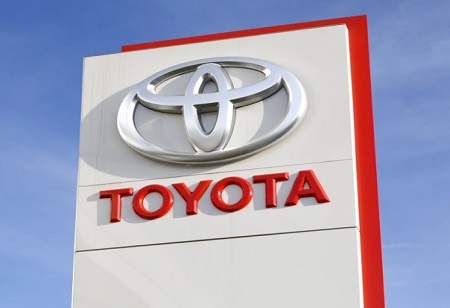
India Named Toyota's New Regional Hub

 Toyota Motor Corporation revealed a regional reorganization, merging India into its 'Middle East, East Asia & Oceania Region' operations. India is designated as the hub for this new geography. Within this restructuring, Masakazu Yoshimura, currently serving as MD and CEO of Toyota Kirloskar Motor (TKM), the company's joint venture in India with the Kirloskar group, will also assume the role of Regional CEO, as per a statement by Toyota Motor Corporation (TMC).
Toyota Motor Corporation revealed a regional reorganization, merging India into its 'Middle East, East Asia & Oceania Region' operations. India is designated as the hub for this new geography. Within this restructuring, Masakazu Yoshimura, currently serving as MD and CEO of Toyota Kirloskar Motor (TKM), the company's joint venture in India with the Kirloskar group, will also assume the role of Regional CEO, as per a statement by Toyota Motor Corporation (TMC).
At present, within the Asia Region, India holds considerable importance in the market. However, following this adjustment, India's role becomes pivotal as it integrates into the Middle East, East Asia & Oceania Region, emerging as the central hub for the upcoming 'India, Middle East, East Asia & Oceania Region' effective January 1, 2024. Toyota Motor Corporation (TMC) emphasized that this reorganization signifies India's escalating significance within Toyota's global business framework. This change acknowledges the market's expanding potential driven by its adept and dynamic workforce.
TMC highlighted Yoshimura's promotion, citing his nearly three decades of diverse automotive expertise gained from working in nations like Japan, China, and South Africa. Appointed as MD and CEO of TKM in 2019, his tenure witnessed successful product launches, including the Urban Cruiser Hyryder, Innova Hycross (both offering hybrid electric variants), and the Hilux.
Last month, TKM disclosed plans for fresh investments totaling Rs 3,300 crore to establish a new plant by 2026, aiming for an annual production capacity of 1 lakh units and creating approximately 2,000 new jobs. Additionally, in 2022, the Toyota group, encompassing TKM and Toyota Kirloskar Auto Parts (TKAP), inked a Memorandum of Understanding (MOU) with the Karnataka government. The agreement involved an investment of Rs 4,100 crore to boost electrification efforts, accelerate the adoption of eco-friendly technologies, and facilitate substantial reductions in CO2 emissions.

